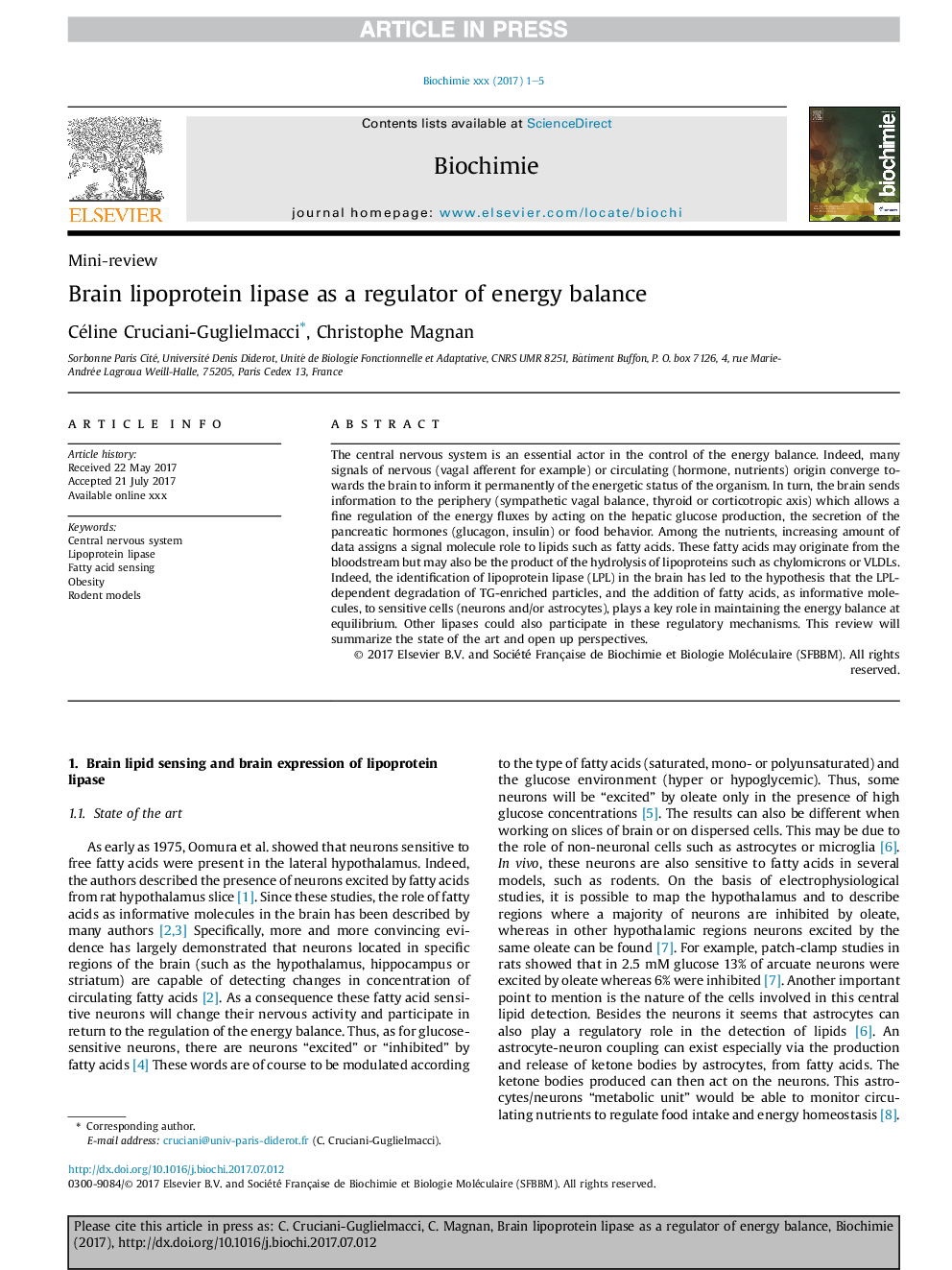| Article ID | Journal | Published Year | Pages | File Type |
|---|---|---|---|---|
| 8304284 | Biochimie | 2017 | 5 Pages |
Abstract
The central nervous system is an essential actor in the control of the energy balance. Indeed, many signals of nervous (vagal afferent for example) or circulating (hormone, nutrients) origin converge towards the brain to inform it permanently of the energetic status of the organism. In turn, the brain sends information to the periphery (sympathetic vagal balance, thyroid or corticotropic axis) which allows a fine regulation of the energy fluxes by acting on the hepatic glucose production, the secretion of the pancreatic hormones (glucagon, insulin) or food behavior. Among the nutrients, increasing amount of data assigns a signal molecule role to lipids such as fatty acids. These fatty acids may originate from the bloodstream but may also be the product of the hydrolysis of lipoproteins such as chylomicrons or VLDLs. Indeed, the identification of lipoprotein lipase (LPL) in the brain has led to the hypothesis that the LPL-dependent degradation of TG-enriched particles, and the addition of fatty acids, as informative molecules, to sensitive cells (neurons and/or astrocytes), plays a key role in maintaining the energy balance at equilibrium. Other lipases could also participate in these regulatory mechanisms. This review will summarize the state of the art and open up perspectives.
Related Topics
Life Sciences
Biochemistry, Genetics and Molecular Biology
Biochemistry
Authors
Céline Cruciani-Guglielmacci, Christophe Magnan,
